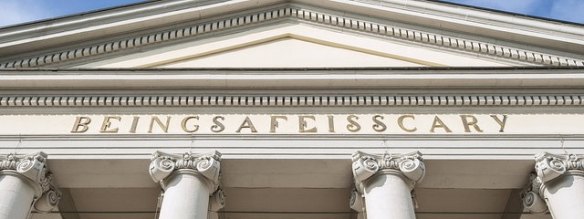A reflection on my, Mira’s, Facilitated OPENLAB on the 6th of July 2018 – season 6, session 21.
Again,
the suspicious body.
This notion has been in my mind, in my artistic research and artworks for a while now.
What is this inquiry about? It’s a question about social relations outside of a dance studio, some sort of political question (…) being taken into a dance studio. Being taken into it in order to look at social relations present in here, the dance studio itself; and in order to research the relations outside; and in order to research the potential of this practice of asking in- and outside questions for creative processes.
That is a lot to inquire. I am by now used to the nature of my research questions and methodologies that seems to look for this complexity. I enjoy it, I want to embrace it through collective and somatic practice. So taking this inquiry into a dance studio is both in order to use the ‘grounding’ effect of somatic work and in order to make the complexity inside of the dance studio visible, as the inquiry reveals that the dance studio context is also to be questioned in its assumptions about openness, tolerance; generally, in its dynamics of social relation.
This is going on in my head and body. How to communicate this complexity, and embrace it, and research it with a group? This is a task to be formed. A practice in itself.
1st idea: Set a collective frame by an exercise, and then to derivate from it.
This just results in different behaviour, the ‘other’ behaviour. What is suspicion then, I asked the group? Something about pretending not to, hiding in a norm, but having another intention: either playing along with the norm in order to break it or unintentionally being a person that is somewhere between norms and other. BETWEEN.
“the truth is I don’t know you suspicious body I will always call you suspicious before I can know you” [X]
Suspicious bodies haven’t yet broken the norm completely, not yet begun a terrorist attack, not yet started a carnival in the middle of the road, not yet disrupted the safe space of intimate somatic exploration. (Yes, this is a provocation. These events may be very far apart from each other and lining them up is a very reductive argumentation. Still, I am curious about its effect.)
How do we know when a norm is about to be broken, broken already? Collective reading of climate in social dynamics is such a powerful situation, we all agreed.
After the game:
2nd idea: Half of the group observes the other half and picks out one by one who appears to be the most suspicious body
“We don’t know what he has in mind.” “She looks like pretending to be relaxed.” “He mimes the others.” “She deliberately wants him to look suspicious.”
This game brought up thoughts on authenticity: if somebody looks authentic or not, and if what somebody does seems to be peacefully engaged shaped our judgements of suspicion, and all of these judgements changed due to the context it was read in. So to follow your sensations in movement may look genuinely trustful when others do the same, but may look unpredictable if others start to have a conversation.
Why does the suspicious body interest me so much, and why the participants? When they say, they are interested in its political dimension, that does not say anything precise. When they tell me about how to read codes in a mass protest and involuntarily spreading the wrong signals, it is more specific. When they talk about self-perception as a being not sure what to expect from, that is another specification. For myself, I ask about the usages and dangers of planting the seed of suspicion in the frame of identifying or naming a body: identifying somebody who is about to commit a crime is useful, but what is potentially harmful can be discussed as well. How do I argue that a terrorist is harmful but a body movement that is using space differently due to a differing functioning of body/mind/sociality may not be? How can I justify and how can we make sure our collective justifications are protecting human values and yet not end up in rigid protective anxiety?

(Thank you Banu Cennetoğlu for this artwork at documenta 14)
Can a question stemming from everyday social relations inform my dance practice? Yes. How? “Can I slip under your skin and behave and move and breath and dance and shout suspiciously with you?” [X]
Can I research a question that is situated in everyday life be answered within the dance studio? Not sure. I think at this point some reflection about the relation of life and art, a reflection of social art and political art would be of benefit. But (a but is not really appropriate, as it is not really a contradiction) I am more concerned here with the very practicality of delivering a research session and researching myself, concerned with the momentary reality of people in space and our interest and ability to ask, answer, translate between frames we build and built.
Dear suspicious body, “Why am I trying to include you in a sphere of comfort, or is it you…Can’t we just accept that this is a forever new and wild world an let go of trying to organise information?” [X]